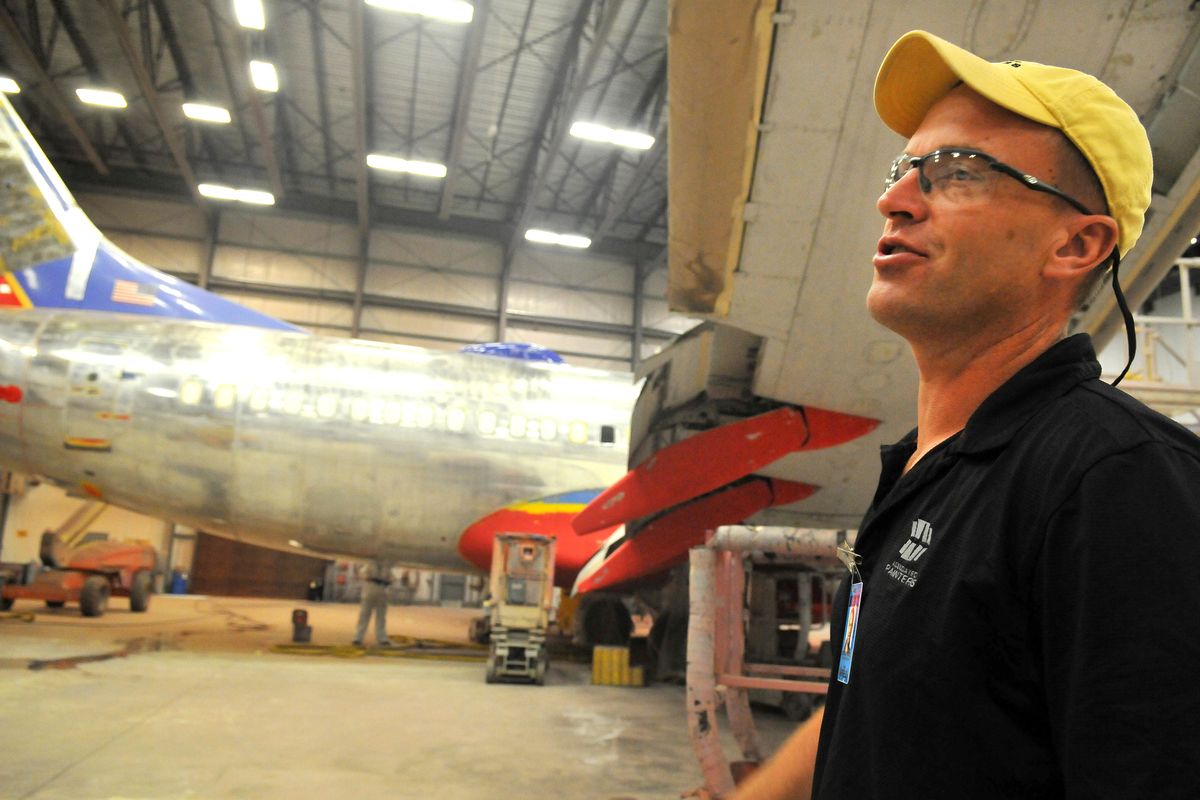Getting There: Airplane painting business takes flight

Rod Friese grew up in South Dakota, where out of high school he took a job painting trucks.
Within a few years, he got a better job painting airplanes for Boeing in Everett.
Co-workers at the time started a small subcontracting business doing paint work on airplanes already in service.
Friese took a second job with them and worked two shifts from 1989 to 1994.
Then he bought the company and recently expanded to Spokane.
Today, Friese, 45, operates Associated Painters Inc. in five cities, including his new plant at Spokane International Airport, where he plans to move his corporate office in the future.
“It’s been a true success,” he said.
Local officials say the arrival of Associated Painters shows the potential for aerospace industry in Spokane, and they hope the success of Associated and other aerospace businesses will draw even more new employers.
The publicly owned airport used a low-interest state jobs loan to build the $5 million, 41,000-square-foot brown hangar that can be seen from Interstate 90.
In 10 months, Friese has met his five-year goal of hiring 42 workers and spending $1.2 million a year on supplies from in-state companies. A potential new contract to paint 100 planes could bring even more business in coming months.
He said the loan kept down the cost of the lease and was a key to bringing him to Spokane.
But he credits the work ethic of his employees for much of the success. Applicants don’t have to have painting experience. Friese trains them on the job.
Last week, workers were repainting a Southwest Airlines jet and awaiting delivery of more airliners.
Stripping paint from the fuselage, sanding composite components and applying new paint are all labor intensive. Workers start at a training wage of about $12 an hour but can earn $15 to $20 an hour as they gain experience in what is a physically demanding job.
“It’s a big surface to paint,” said George Straley, a former auto painter who went to work for Associated because he was looking to do something different.
“It’s always a good conversation starter,” he said of his new job. “We’ve got a pretty good crew here.”
The work is recognizable. The company painted the Portland Timbers and Disneyland airplanes for Alaska Airlines, Shamu killer whale planes for Southwest Airlines, and the Boise State and University of Idaho planes for Alaska Airlines/Horizon Air.
Spokane is a good location because it is a regular stop for several major airlines. Local carriers just drop off their planes at the gate, and Friese tows them to his hangar on the south side of the main runway.
The hangar is equipped with huge doors and an electronically controlled air-handling and three-stage filtration system that maintains a clean, efficient environment for the polyurethane finishes. More than 99 percent of volatile compounds and particles are captured by the filters and kept out of the environment.
Friese takes pride in the quality of the work and is driven to please his customers.
“You are only as good as the last plane you deliver,” he said.
Corridor connection causes 395 detour
The long list of traffic detours and slowdowns in Spokane will get even longer with nighttime closures next week on U.S. Highway 395 near the Little Spokane River.
Aug. 1-5, traffic in both directions will be diverted onto Wandermere and Hatch roads from 7 p.m. to 5 a.m. each day so a contractor can build a connection of the North Spokane Corridor to Highway 395 just north of Hastings Road.
During daytime hours, traffic will be allowed on a single Highway 395 lane in each direction through the work zone where two interchange bridges will touch down on the existing highway alignment.
Cheney mayor on state task force
Cheney Mayor Tom Trulove has been appointed by Gov. Chris Gregoire to a new Connecting Washington Task Force to develop a 10-year plan for building and funding transportation projects in the state.
Also on the task force is Susan Meyer, chief executive officer of Spokane Transit Authority.
Fire station opens at Snoqualmie
A new volunteer fire station has been opened at Snoqualmie Pass following federal legislation authorizing the use of more than an acre of Forest Service land for the station.
The station replaces a 1920 building that was originally a transportation maintenance shed. It will serve as home for emergency firefighters and medics responding to incidents on I-90.